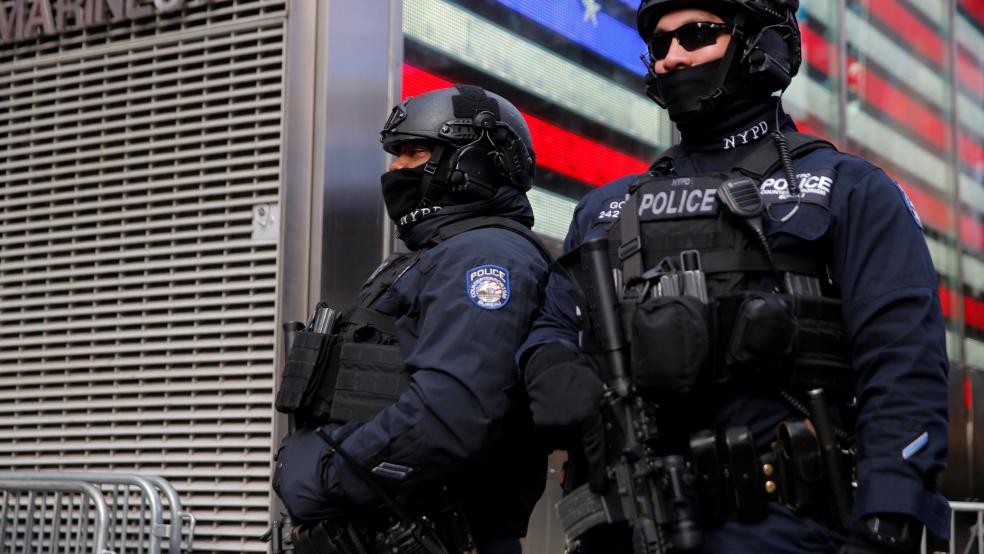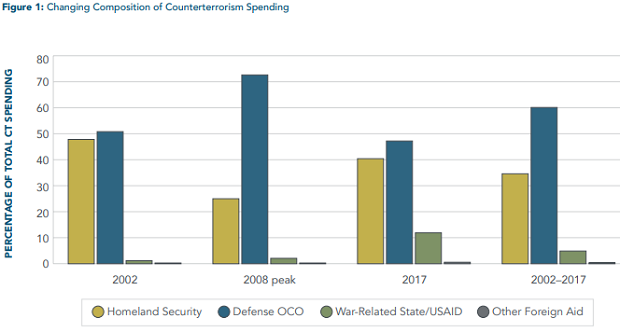The U.S. has spent roughly $2.8 trillion fighting terrorism since 9/11, according to a new analysis from the nonpartisan Stimson Center, a think tank focused on security issues.
A study group at the center found that counterterrorism spending reached a peak pf $260 billion in 2008, at the height of the wars in Afghanistan and Iraq. Spending had declined to $175 billion by 2017, though that’s still more than 10 times the amount spent in 2001. Counterterrorism accounted for 14 percent of discretionary spending in 2017, down from a peak of 22 percent in 2008.
Of the $2.8 trillion total, Defense Department emergency and Overseas Contingency Operations spending totaled $1.7 trillion, or 60 percent; homeland security spending accounted for $979 billion, or 35 percent; war-related spending at the State Department and USAID totaled $138 billion, or 5 percent; and other foreign aid totaled $11 billion or less than half a percent.\
The estimates, which cover the years 2002 to 2017, come with lots of caveats, and there are good reasons to think real cost could be significantly higher or lower. In a report published late last year, the Watson Institute for International and Public Affairs at Brown University put the total cost of war-related spending, including future obligations to veterans, at $5.6 trillion, or double the Stimson estimate.
The difficulty in tabulating the costs of the war on terror, the Stimson analysts write, is that the U.S. has no single, stable definition of counterterrorism. This makes a clear accounting of the cost of the various counterterrorism efforts a complex project, with significant room for error and interpretative disagreements. It also clouds any effort to judge the relative effectiveness of specific counterterror programs, and to evaluate the effort as a whole.
The Stimson analysts settled on a definition of counterterrorism (CT) spending that includes “all war-related, OCO [Overseas Contingency Operations], and emergency supplemental spending; all homeland-security-related spending as defined by OMB’s [Office of Management and Budge] homeland security index; and all foreign aid through U.S. funding accounts and initiatives specifically created for CT.”
One problem facing the analysts is that counterterrorism funding cuts across government agencies and includes programs in areas as diverse as defense, education and medical research. And even within a single agency, funds may be dispersed in ways that are hard to track. Within the Pentagon, the off-budget Overseas Contingency Operations account is particularly problematic, since it is used to pay for the wars in Iraq and Afghanistan but also for a variety of other programs that may be unrelated to counterterrorism. Classified programs are also hard to account for.
The analysts said they expect spending levels to remain at around 15 percent of discretionary spending for the foreseeable future.





